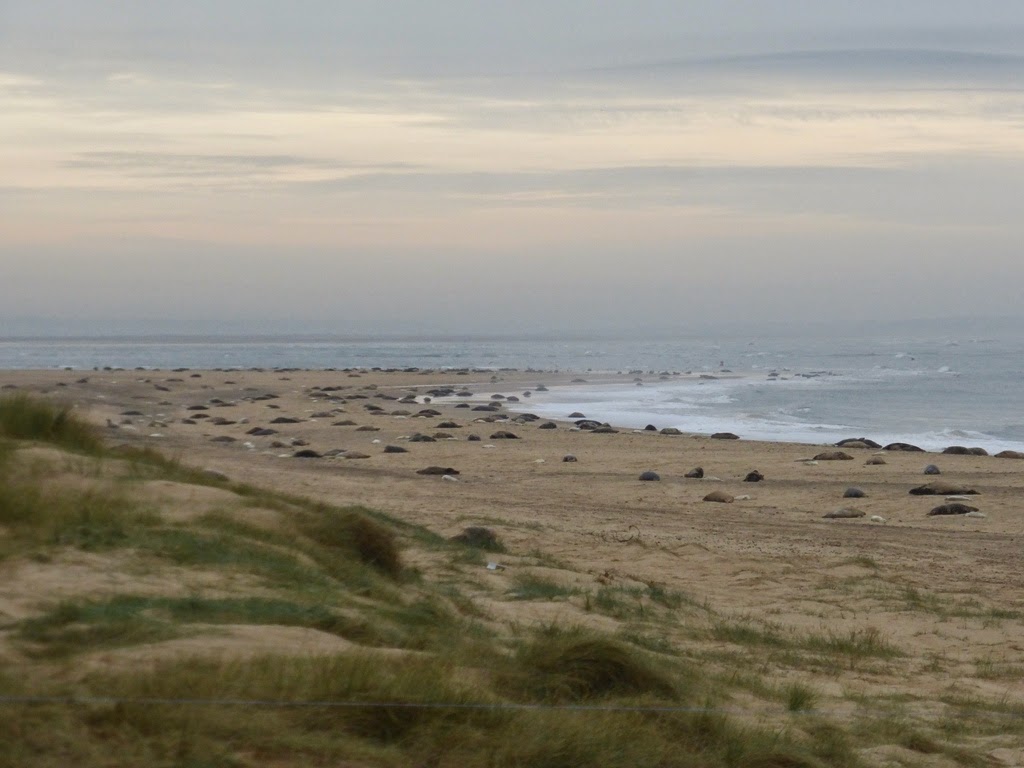This weaned pup has almost moulted its white fur
With weaned pups starting to leave the Point, our counting methodology changes. A total count will only show the number present, which is now less than the total number born. So, as of today, we are counting new-born pups and adding them on to yesterday's total of 1,420.
Plenty of pups are still being born
Today's count of new-born pups totalled 88, which puts the total for the year so far at a whopping 1,508 - and it's not even December yet. We are 381 pups ahead of the same date last year. This means we have now caught up with the Farne Islands, who had 1,507 yesterday, but started pupping five weeks before us and are coming to the end. We are just behind Donna Nook, who had 1,541 yesterday, they started pupping a week before us and are starting to see a decrease in the number of cows. So it looks like we may well reach our prediction of being the largest Grey Seal rookery on the English coast. There will be lots more births at Blakeney throughout December, so watch this space!
They're so cute!
In other wildlife news, some notably late migrant birds were seen on the Point today: a Black Redstart in off the sea and also two Chiffchaffs.
- Ajay (Coastal Ranger)
Photography by Andrew Capell






























